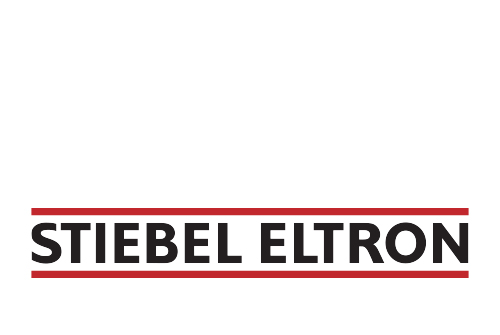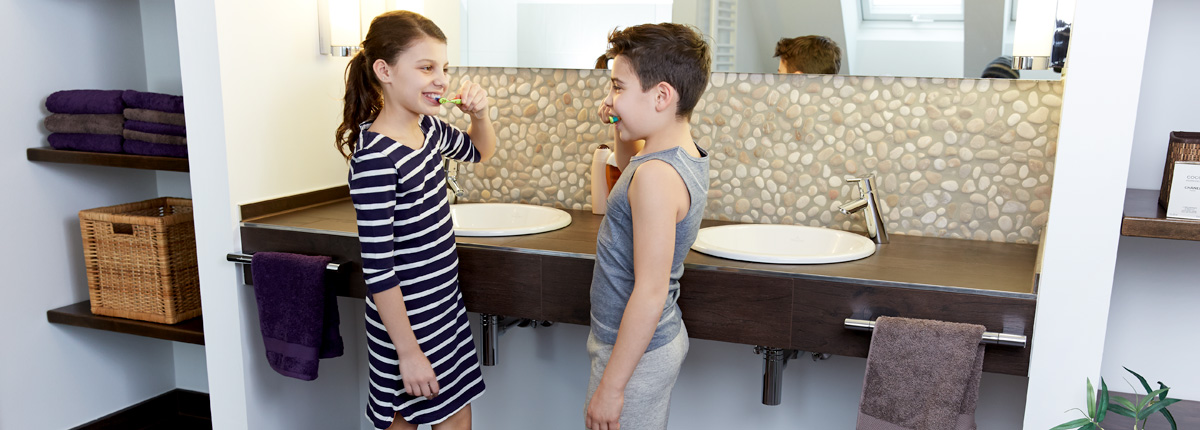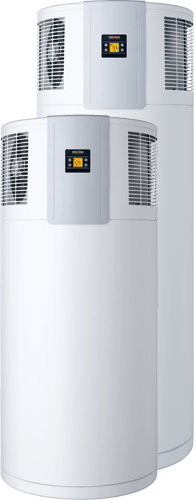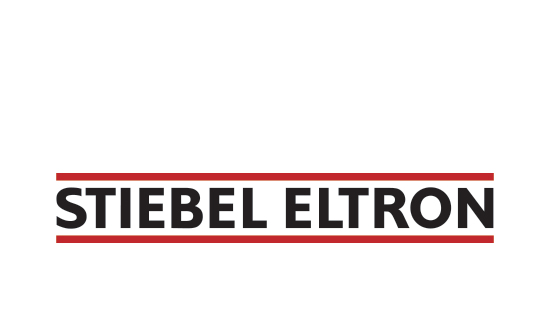We design heat pump water heaters.
At Stiebel Eltron, our goal is to provide energy efficiency in addition to comfort. [And, of course, engineering and manufacturing excellence.]
Our heat pump water heaters are designed from the ground up to rely on the heat pump, not on the back-up element. We don’t call the Accelera® heat pump water heaters “hybrids.” They’re not.
Our tanks are large, because large is the best for a heat pump water heater. Even our “50-gallon” heat pump water heater is actually 58 gallons. Large capacity means the water you are using, as much as possible, was heated the most efficient way — with the heat pump.
We super-insulate our tanks, because minimizing stand-by losses means less energy is wasted. In order to deliver all the energy savings a heat pump water heater can, in addition to all the hot water comfort it holds, it makes no sense to skimp on the insulation and increase energy consumption.
We use a single resistance element for back-up water heating during times of high demand. Our single booster element is located in the most efficient place — at the very top of the tank because that’s where the hot water is drawn from.
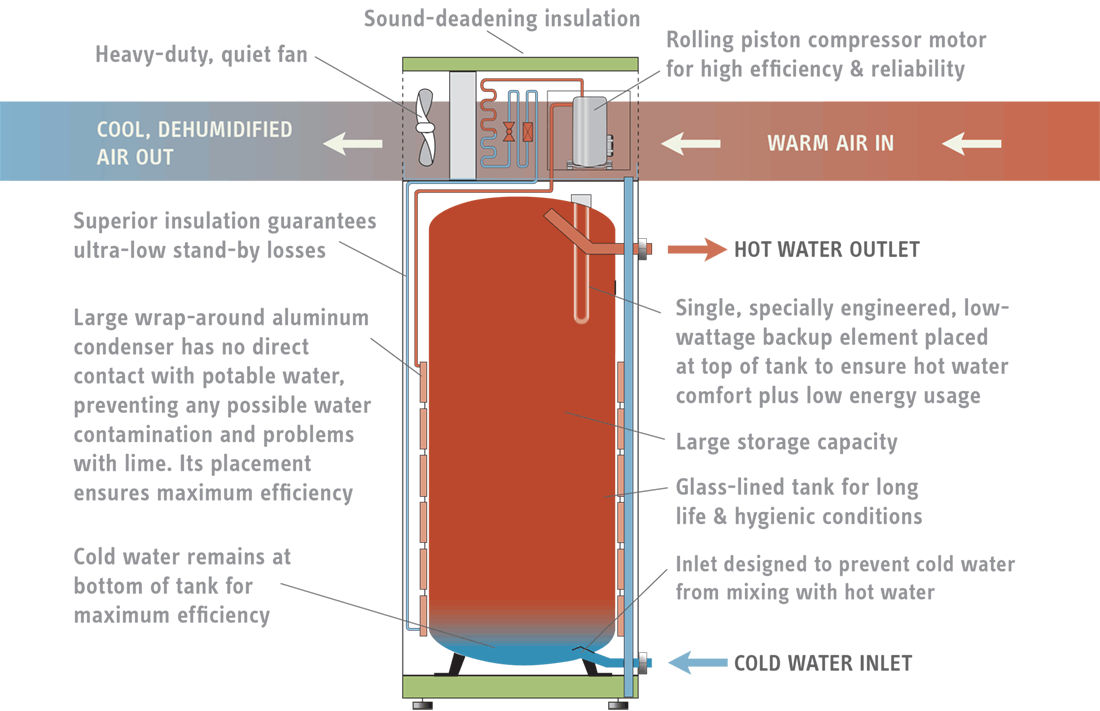
These are not "hybrids." They are Stiebel Eltron heat pump water heaters
With decades of heat pump experience it has been obvious to us that a heat pump water heater ought to make hot water with the heat pump, and not with a back-up element. This simple solution seems to have escaped others. Yet it has made our heat pump water heater the largest seller in Europe for over 30 years.
Heat pump water heating technology means the amount of energy needed to heat water is greatly reduced compared to conventional water heaters. Until now, the best “high efficiency” water heaters only approach making the equivalent of 1 watt of hot water for every watt of energy they consume. Heat pump water heater technology redefines water heater efficiency. For every watt an Accelera’s compressor and fan uses, the equivalent of 3-5 watts of hot water are generated.
In warm climates, an Accelera® is placed either in the garage, where it uses the heat from the outside air to make hot water, or inside the house, where it helps with the air conditioning load. In cooler climates, the unit is typically placed in the basement where it also acts as a dehumidifier. You get hot water at a discount plus a drier basement as well.
What's the difference?
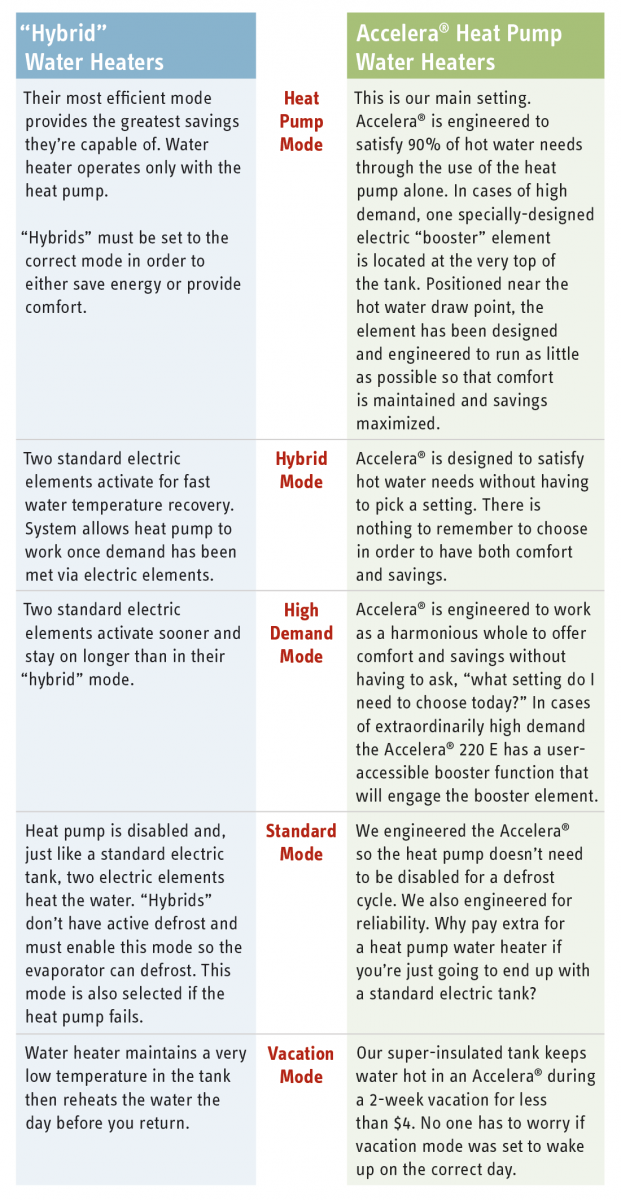
Here are some of the features of our heat pump water heaters and why they have them:
Digital display
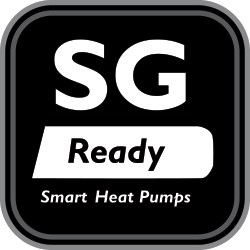
An electronic control unit on the Accelera® 220 E provides easy access to all information about performance for both installer and end user. In addition to other data, the display gives information on total volume of hot water available. The ECU is also “smart meter” ready and capable of external signaling to give priority to renewable energy sources if available to lower utility bills.
Easy access for service
The entire top of an Accelera® 220 E can be quickly removed for easy servicing from all sides.
Redesigned air flow
Air intake and exhaust on the Accelera® 220 E have been redesigned to allow more opportunity for installation in compact spaces. In addition, noise is reduced by separating the airflow from the refrigerant loop with a baffle and increasing the fan diameter.
Impressed current anode corrosion protection
The Accelera® 220 E comes equipped with a closed loop controlled electronic anode for maintenance-free corrosion protection. The minimum current necessary to provide protection is always used as opposed to a steady-on system.
The condenser
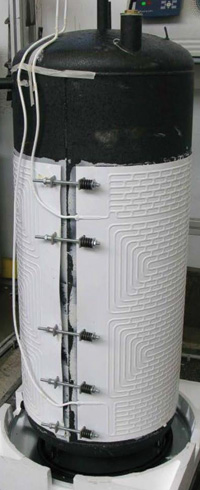
Both the Accelera® 220 E and the Accelera® 300 have a roll-bond wrap-around condenser because it prevents refrigerant contamination of the water, mitigates hard water problems (in conjunction with the glass-lined tank), and is the best solution for energy efficiency.
The evaporator
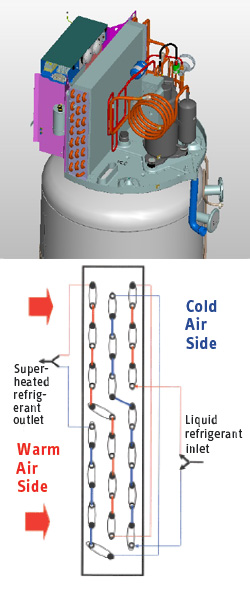
The coating on the Accelera® evaporator protects against corrosion. It also provides for quick water drainage to increase air flow for greater heat transfer and efficiency, and dispenses with the need for a filter. Both models also have a dual-path refrigerant flow through the evaporator to provide cold climate performance in addition to performance in warm climates.
The cold water inlet
Both models have been designed to prevent incoming cold water from cooling the hot water in the tank during a draw. Our goal is to provide the greatest amount of hot water as possible without using the booster heating element so that maximum efficiency is achieved at the lowest electrical cost. This feature also allows a small cold water reservoir to remain in the very bottom of the tank to promote heat pump efficiency.
Large tank + single heating element
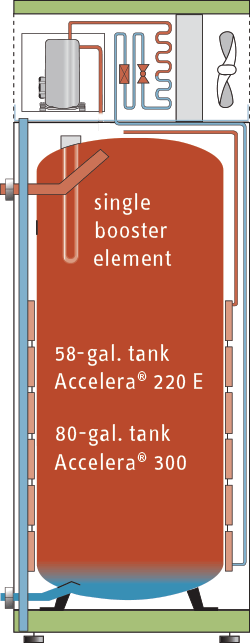
A heat pump water heater’s recovery time is slower than a standard tank. But with the correct balance engineered between tank size and heat pump capacity, both efficiency and comfort are possible. The tank in an Accelera® 300 is 80 gallons because, with 30 years of heat pump experience, we know that is the optimal size to satisfy as much annual average household hot water demand via the heat pump as possible. Similarly the Accelera® 220 E tank is 58 gallons because it is a perfect fit for smaller households. With both models, if more hot water is needed, the single back-up element at the top of the tank near the outlet ensures comfort without sacrificing efficiency.
How a heat pump works in an Accelera®
An Accelera® works like an air conditioner, but instead of transferring the heat outdoors, it transfers it into the tank of water. This process is many times more efficient than any other water heater. It works like this:
- The fan moves room air through the evaporator, which contains liquid refrigerant that extracts heat from the ambient air as it evaporates. As the refrigerant warms, it changes into a gas.
- The warm gaseous refrigerant passes through the compressor which increases its pressure. As the pressure increases, the temperature of the refrigerant rises until it becomes hot.
- The hot refrigerant then passes through the condenser wrapped around the water tank. Because heat travels from hot to cold, the heat in the refrigerant transfers to the water in the tank.
- The refrigerant, now a super-cool liquid, passes through the expansion valve to become a warmer, yet still cold, liquid, ready to become a gas again in the evaporator and continue the cycle.
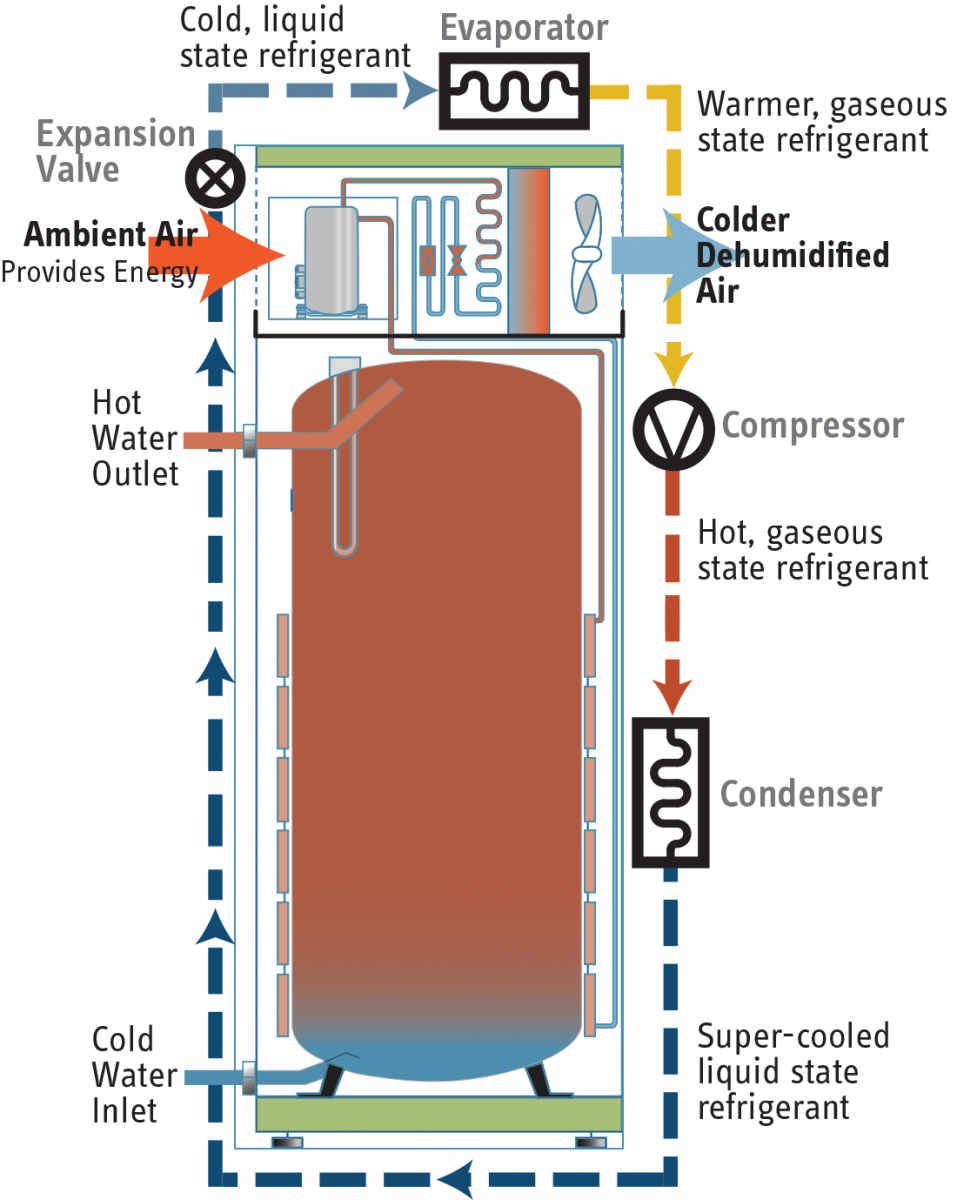
Accelera® heat pump water heaters use environmentally-friendly R134a for refrigerant.
